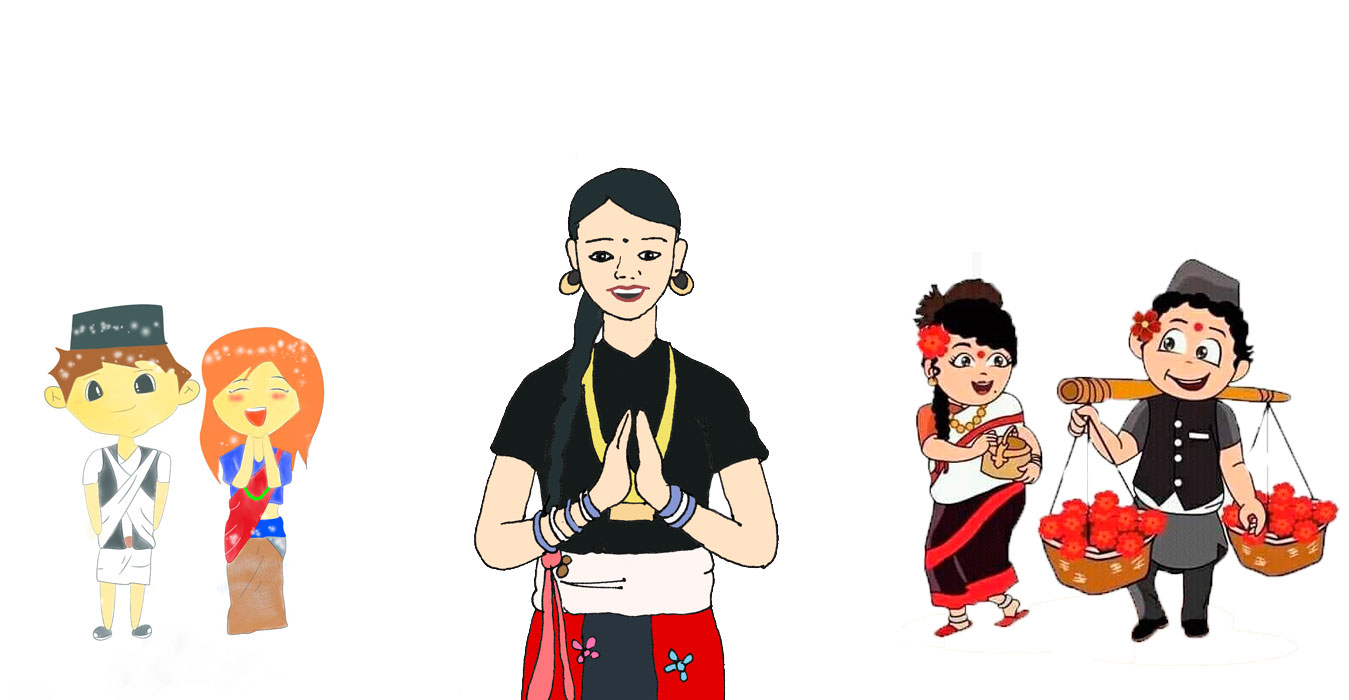
Before coming to people, let us peek into the communities in Nepal, where Nepalese have been living for centuries. These societies are complex combinations of long-established ethnicity and languages.
You might be shocked to hear that in this country (smaller than the US State-Washington DC.), there are over 100 different ethnic groups who speak around 123 other languages.
It is equally evident that the people of Nepal (especially in rural sectors) are strict adherents to a caste system. Their works clearly reflect how much they believe in the caste system: so-called the higher caste and the lower caste.
Still today, the castle syndicate is prevailing in the communities; for instance, the religious processions are to be carried out by the Brahmins only. These caste-imposed codes of conduct and status have significant influence over people's lives in Nepal.
Interestingly, there are some characteristic traits of Nepalese people in general. Most of them are honest and straightforward. They are devout to their promises and are trustworthy.
Also, they respect others’ opinions or beliefs, even if it doesn’t coincide with their understanding, which may be why there has been no religious conflict in Nepal until today.
The flexibility and pragmatic attitude of Nepalese are commendable. But, above all, they are recognized for their patience, sense of humor, and quick smile.
In the past, early arranged marriage was expected, where parents married their sons and daughters at an early age of around 9. But this trend has now been prohibited by the government. Yet, we can find this custom still prevailing in the underprivileged part of the country.
Arranged marriage is more prevalent in Nepal. But, in modern cities, people have preferred modern arrange-marriage, in which a boy and a girl meet with each other, fall in love, decide to marry, and then ask their parents to arrange.
Brahmins possess the highest social status in the Nepalese community. They are the priestly caste, which means that most of the priests you see in the temples or other Hindu Shrines are members of the Brahmin clan.
Brahmins are typically, classified as Khas Brahmins, Newar Brahmins, and Terai-based Brahmins. Khas Brahmins have more influence in the temples and communities than Brahmins.
They are further sub-classified as Upadhyaya Brahmins, Kumai Brahmins, and Jaishi Brahmins. Of these three Brahmins’ titles, the former (Upadhaya) caste is considered to be the superior one, while the latter designations still hold a significant status in the community.
Many of the government officials in Nepal are Brahmins.
Chhetris holds the second position in the caste hierarchy of Nepal. They are the largest group among other castes, contributing over 16% of the total population of Nepal. Before the democratization of Nepal, most of the administrative affairs were handled by chhetris; In fact, the rulers, governors, and other administrative elites, all belonged to Chhetris.
They are respected members of society.
Gurungs are one of the active members of the military since the Gorkha Kingdom. They served in the unification campaign of Prithvi Narayan Shah as the fierce-fighters. Also, from the date when the British Empire entered Asia, Gurungs have been serving the British in Army regiments as Gurkhas. They are well-known for their bravery.
Gurungs are settled around the mid-hilly region of Nepal, especially around the Annapurnas. Most of the Gurungs are Buddhists, while some are also into the Bon religion.
Newars are the indigenous inhabitants of Kathmandu valley. They are mainly involved in the trading business. But, primarily, they are known for their artistic skills in design and architectural works.
Most of the edifices that have become a pride of not only Kathmandu but the whole of Nepal are the outstanding creations of Newars. The massive pillars and carving works around the Patan Durbar Squares, Bhaktapur Durbar Squares, etc. are done by Newars. Also, their mouth-watering delicacies have been a special part of the hospitality in Nepal.
They have their own language, which is Newari (also known as Nepal Bhasa).
Yes, most Nepalese, who live in the cities, understand English. Also, those who are living in the trekking regions such as Everest, Annapurna, Kanchenjunga, etc. can understand the English language easily.
But, try to use your hand gestures while speaking because it is very much necessary to send the right meaning of your sentences.
Whenever you interact with a Nepalese person, join your palm in a clapping gesture and say Namaste. This method of greeting is popular and loved by all. In Sanskrit, ‘Namaste’ means my soul is bowing to your soul.
Also, the people might ask you whether you had breakfast or lunch or anything; this is another way of saying, how are you? If you say no, then, they might invite you for lunch or breakfast. Incredible! Isn’t it? This is just a part of the hospitality of Nepalese.
Leave Your Comment